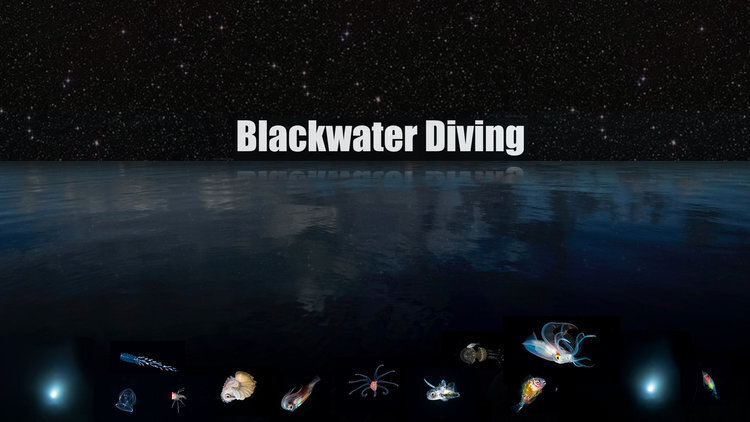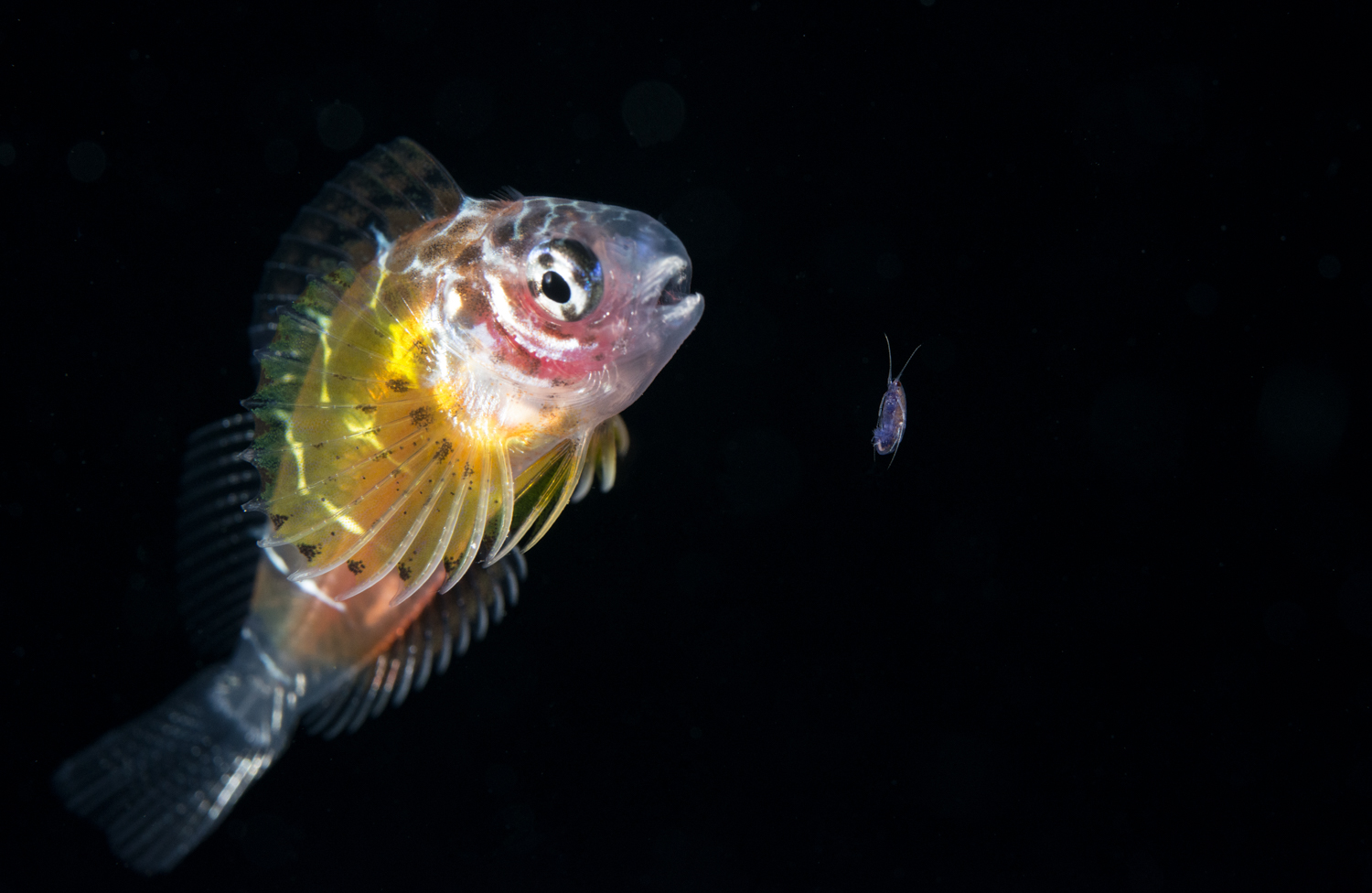WHAT IS BLACKWATER DIVING ?
Blackwater Night diving in it’s simplest form is looking for planktonic larval forms at night. Recently it has developed into many different styles but originally it was started commercially in Hawaii more than 15 years ago. The original concept consist of diving offshore in the middle of the ocean at night and jumping into the deepest water you can find to witness the largest migration of animals on the planet, the mesopelagic migration. This style has been adapted over the years into two categories.
HOW DO YOU DO BLACKWATER DIVING ?
These two categories are Open Ocean and Bonfire. The main differences between the two is that Open Ocean blackwater should have deep water and is drifting with the current whereas a Bonfire blackwater the lights are stationary either on a sandy bottom, ledge or wall with a deep drop off.
OPEN OCEAN - Find as deeper water as you can, hang lights at around 12m (for a reference depth) either from a boat or floating buoy and drift over a contour or deep shelf. Microscopic zooplankton rises from the depths towards the lights bringing with them an array of magical creatures. Post larval stage fish and juvenile undeveloped species come into the lights to feed, gelatinous pelagic invertebrates, jellies, comb jellies, ctenophores, pelagic gastropods and pelagic cephalopods are all attracted to the lights. It is the biggest migration of animals on the planet and it happens every night. Around one hundred million tones of bio mass rises from the mesopelagic layers (so deep that light cannot penetrate) to the epipelagic layers (close to the surface) to feed and respire on richer concentrations of oxygen.
BONFIRE - Find a sandy bottom near a patch reef, a wreck or a ledge/wall near deep water. Place the lights at around 12m and follow the same procedures. Even though the depth is considerably shallower, the results are outstanding. Nocturnal creatures that are usually extremely hard to find come out from their daytime hiding places and hunt in the lights, reef dwellers, sand dwellers all sorts of juveniles, that had recently made their way back to the reef and settling in their new habitat are drifting all around you.
Doing bonfire blackwater inside the sheltered reef made us realise you don't necessarily have to drive for hours offshore to do something similar to open ocean blackwater diving. Every place you try whether it’s a wreck, reef, drop off, wall or shallow sandy bottom, might just have something unique and special hiding in the daytime that might be willing to come out at night.
THE ORIGINAL CONCEPT
PHOTOGRAPHY EQUIPMENT
I use a Nikon D850 Full frame camera with Nauticam housing and all ports.
The lens I find works best is a Nikon 60mm to give you more focal distance to find the subject.
My settings are generally 1/200, F16+, ISO 320.
2 x Sea & Sea Ys 250’s mainly at half power for fast shooting and recycle times.
I also use 4 x 18,000 lumen Dive Pro Lights for my light attractors attached to the drop line.
PALAU BLACKWATER
I started blackwater diving in Palau back in 2012 and since then have over five hundred blackwater dives in Palau. We were also some of the first people to start experimenting with bonfire diving or blackwater close to the reef. Palau is one of my favourite places to photograph blackwater subjects.
































